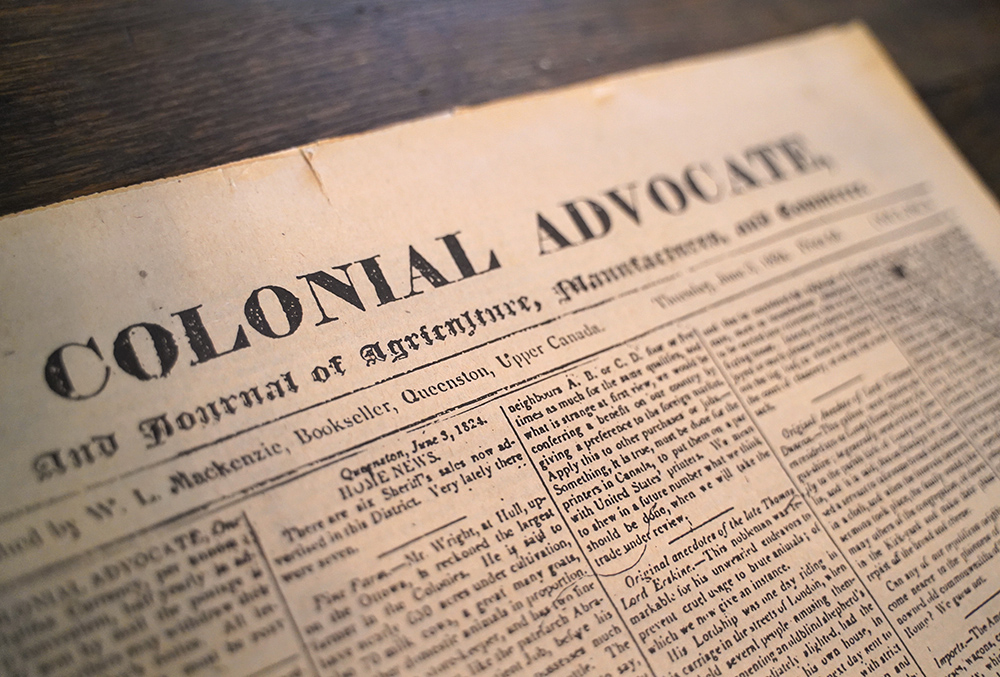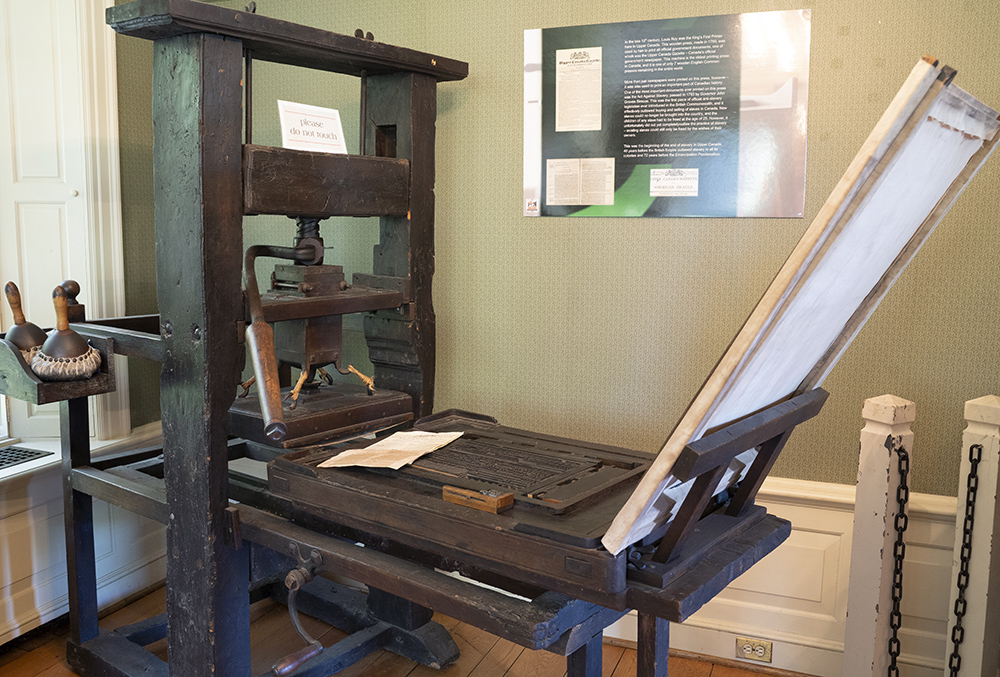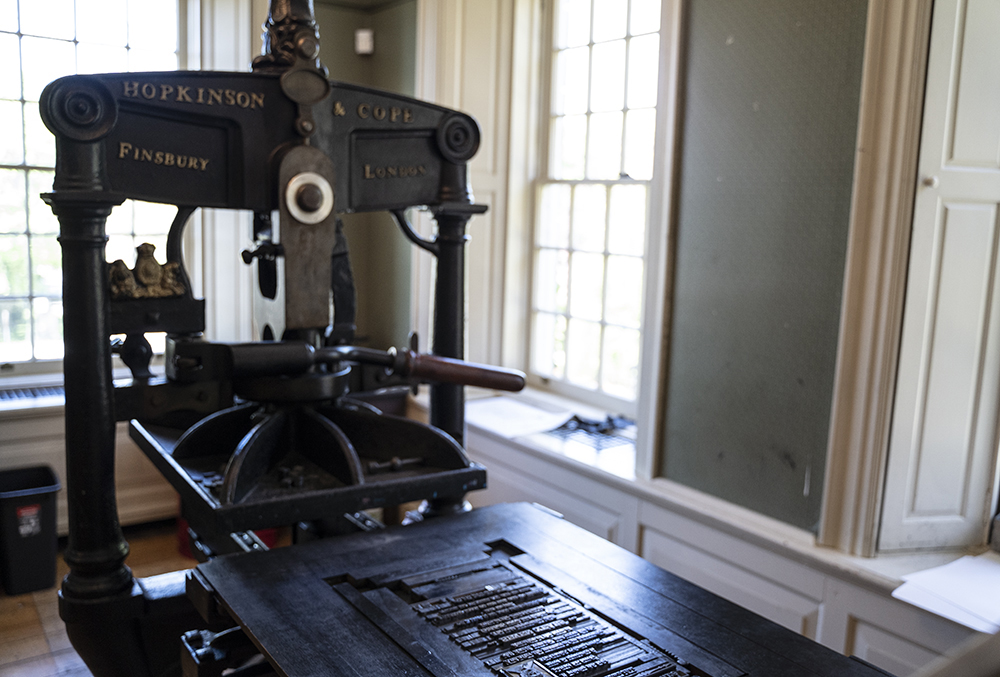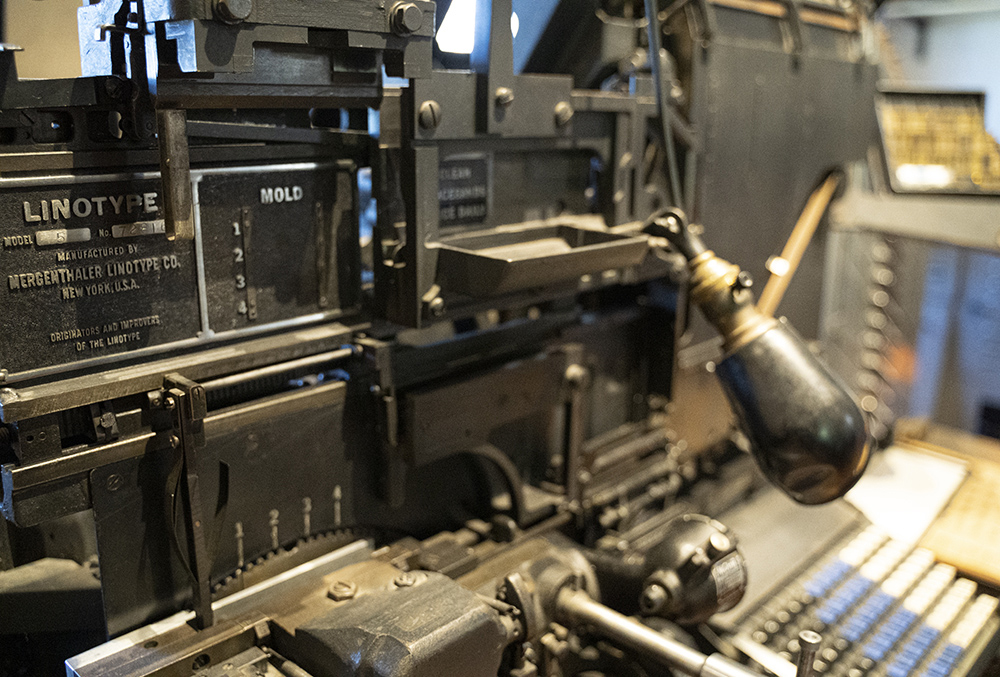A Look Inside
The world of print…
Visit the quaint village of Queenston to discover 500 years of printing technology inside the restored home of publisher, rebellion leader, and Toronto’s first mayor, William Lyon Mackenzie. Here, visitors will learn about the different types of printing presses including the Louis Roy Press, the oldest printing press in Canada and one of the few original wooden presses remaining in the world.
A Virtual Visit of Mackenzie Printery

An introduction
The Mackenzie Printery is where you’ll discover 500 years of printing technology. The restored building was home to William Lyon Mackenzie, born in 1795 in Dundee, Scotland, he travelled to Upper Canada in 1820 in search of a better life.
In 1824, as a way to speak out against the government at the time, Mackenzie launched a newspaper called The Colonial Advocate. In this newspaper he would talk about government corruption and promote change within the system. The Colonial Advocate became very popular; printed biweekly with roughly 250 subscribers.
In 1834 Mackenzie changed the name of his newspaper to The Advocate because his approach was considered more radical with ambition to gain a more responsible government in Upper Canada.
By 1836, he stopped printing his newspaper because he was organizing the Upper Canada Rebellion of 1837.
Movable Type
Movable type was invented by a man named Johannes Gutenberg around 1450, along with the first wooden printing press – called a screw press. Although other forms of printing had already existed, Gutenberg gained credit for creating the most systematic way of printing. Gutenberg was a goldsmith living in Germany and had a lot of experience working with soft metals such as lead, tin and antimony, which is what movable type is made of.
Movable type is every letter, number, and symbol hand-casted in molds to create something like a stamp. The letters will appear backwards. When you put ink on the type and make an impression, it then prints the right way. The first document Gutenberg ever printed was the Bible.


The Wooden Press
Our wooden press is not a Gutenberg press, but quite similar. It is called an English Common Press. Manufactured around 1760, it was brought to Upper Canada in 1791 by John Graves Simcoe – AKA the first Lieutenant Governor of Upper Canada.
To operate a wooden press you need to set each piece of movable type in a composing stick; letter by letter, to form words, sentences, and paragraphs. The type was transferred into the chase, located in the bed of the press. To operate a press, two people were required – the Beater and the Puller. Ink was made using soot from the fireplace mixed with linseed oil. Each print takes two impressions as the platen is too small to press the entire page at once. Up to 200 prints per hour could be made using wooden press technology.
This method was used to print the Upper Canada Gazette, Ontario’s first newspaper, in 1793. The Upper Canada Gazette was a monthly newspaper because the cost of printing was so expensive and hand-setting newspapers was a very long process. The Slave Act of 1793, which was the first declaration to limit slavery in Upper Canada, was also printed off this press. This press is nicknamed the “Louis Roy Press” because he was the first King’s Printer of Upper Canada and used this press to print those historic documents in Newark – present day Old Town Niagara-on-the-Lake.
The Albion Press
Cast-iron printing presses replaced wooden presses in the early 1800s because they were less fragile to the elements, use and force. This technology meant you could print an entire page at a time versus printing half a page, like the wooden press. Cast-iron presses could also print more copies per hour than a wooden press – up to 500 prints per hour.
Lord Stanhope of England first invented the Albion Press because he believed that casting a wooden press in iron would make it a lot stronger.
The press inside the Mackenzie Printery was made in London, England in 1863 and is very similar to the press Mackenzie would have operated.


The Pilot Press
Invented in the mid 1800’s, Pilot presses made printing much more efficient. Innovative in design, these presses could make up to 1000 prints in one hour!
Movable type was placed inside the chase. To operate the press, paper was placed within the pins attached to the tympan. Next, a lever is pulled to ink the type. When the lever is lowered, the ink rollers re-ink the type and the printed work is created. The plate would be re-inked every 500 prints.
These presses were used for smaller projects such as flyers, books and greeting cards.
This printing process inspired many newspaper companies to look for inventors to create machines that would set movable type for them, or replace movable type altogether. Ottmar Mergenthaler created the best type-setting machine called the Linotype. It was perfected in 1886.
The Linotype Machine
Ottmar Mergenthaler spent a great deal of his life and money inventing and perfecting the Linotype machine. It became the most widespread typesetting machine used in North America.
A keyboard was developed putting common-used letters and words close together. An operator typed text on the keyboard while the machine assembled matrices; moulds for letters to form a line. While typing, the machine melts a combination of lead, tin, and antimony. When the line of matrices is pushed into the machine, hot metals are put into the moulds and they cool instantly forming a line of type – hence the name, Linotype.
A paper impression is made using the flat type. The paper is then rolled into a drum shape and cast. That cast is put onto a press that spins quickly enabling thousands of pages to pass under and be printed in minutes.
The letterpress could make thousands of copies per hour and when you were finished with your drum, you could melt it down to create a new one. Recycling the materials made printing more cost efficient and lowered the price of newspapers for the public.
The Linotype was used to print newspaper until the early 1980’s, so it took about 100 years before we came up with something better!


 Close and
Close and